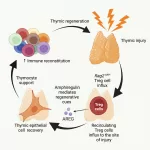A new survey led by the University of Melbourne has raised concerns over the increasing susceptibility of younger Australians to using nicotine pouches. The study, published in the Nicotine & Tobacco Research journal, reveals that 70% of Australians aged between 16 and 39 may be at risk of trying these nicotine products.
The survey, conducted by Associate Professor Michelle Jongenelis and her team, included 817 participants—adolescents and adults who had never previously used nicotine pouches. The respondents were asked about their curiosity, willingness, and intentions regarding nicotine pouch use in the next six months.
Nicotine pouches are small, discreet bags filled with nicotine, sweeteners, and flavorings. They are placed between the lip and gum, where the nicotine is absorbed into the bloodstream. Despite their legality being questionable in many regions, the products have become increasingly available, often marketed in a variety of flavors and sold cheaply.
The results of the survey were alarming: 66% of participants expressed curiosity about nicotine pouches, 55% said they would be willing to try them if offered by a friend, and 46% intended to try them in the next six months. The findings also pointed to a higher likelihood of risk among those with positive attitudes toward the products, those who did not perceive nicotine as addictive, and those with friends who already used nicotine pouches. Past or current users of e-cigarettes were also identified as being more likely to try nicotine pouches.
Associate Professor Jongenelis emphasized the urgency of addressing the issue, stating that “susceptibility to product use is a strong predictor of subsequent uptake.” She highlighted concerns that with the Australian government tightening regulations around vaping, the industry has turned to nicotine pouches as a way to target a new generation of users.
“These highly addictive products are illegal in some areas, yet they are still readily available and attractively marketed. It is critical that enforcement efforts to combat the use of vapes also address nicotine pouches,” said Jongenelis.
The survey results also underscore a broader issue of public health. Associate Professor Jongenelis pointed out that nicotine pouches can be difficult to detect because they are largely invisible once placed in the mouth, making it challenging to identify users, particularly among young people.
In light of these findings, Jongenelis stressed the importance of prevention programs that target the use of a range of nicotine products, including nicotine pouches, vapes, and cigarettes. These efforts are essential to safeguarding the health of younger Australians and preventing long-term addiction.
As the debate over the regulation of nicotine products continues, experts are calling for stronger action to protect public health and reduce the risks of nicotine addiction among young people.
Disclaimer: The contents of this article are based on the findings of a study published in Nicotine & Tobacco Research. The opinions expressed by the researchers do not necessarily represent the views of the University of Melbourne or the journal itself.
For more details, see the original research: Mary-Ellen Brierley et al, Correlates of Susceptibility to Nicotine Pouch Use Among Australian Adolescents and Younger Adults, Nicotine & Tobacco Research (2025). DOI: 10.1093/ntr/ntaf001.











